Botanical name : Pastinaca sativa
Common name : Parsnip
Challenging for seed saving
Lifecycle: Biennial
Pollination: Insect pollinated
Mating system: Each flower in a flower head produces pollen before it is able to accept it. Flowers can pollinate other flowers in the same flower head.
Suggested spacing: 45cm or more. Flowering plants are large and may require staking.
Seed specific requirements: Vernalisation. Phytophotodermatitis warning.
Isolation distance: 250 m
Population size: 20 or more plants
Seed maturity: Seed turns brown and papery and start to detach easily from the plant
Processing method: Dry threshing and winnowing
Expected seed viability: 1 year
Images
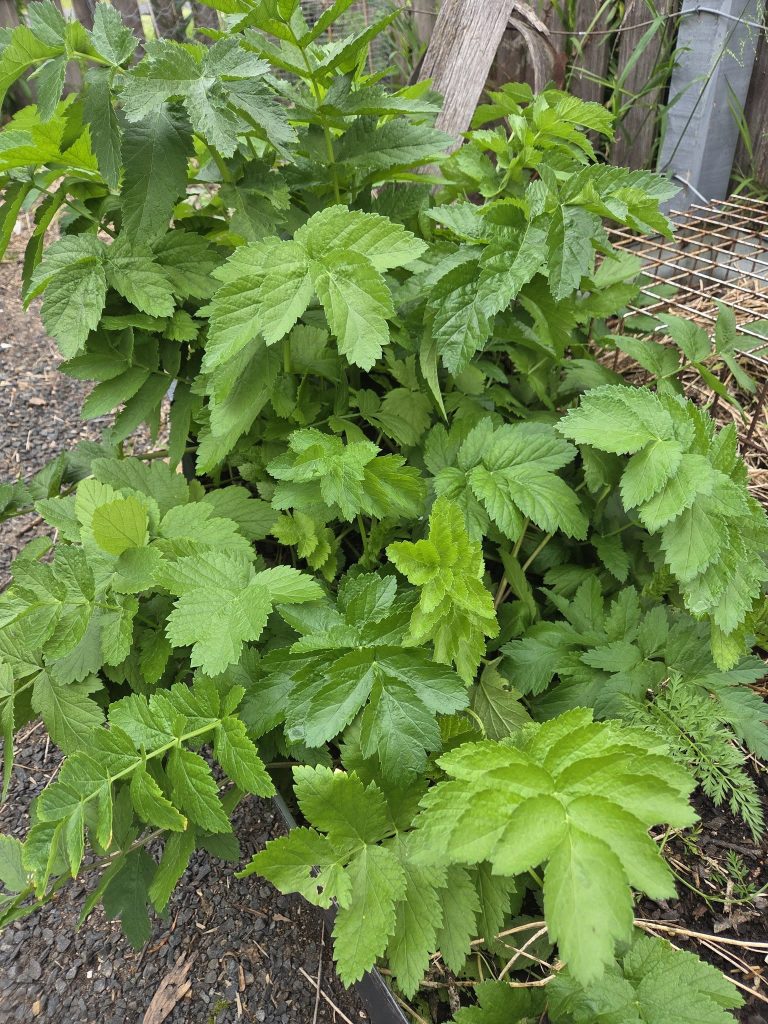
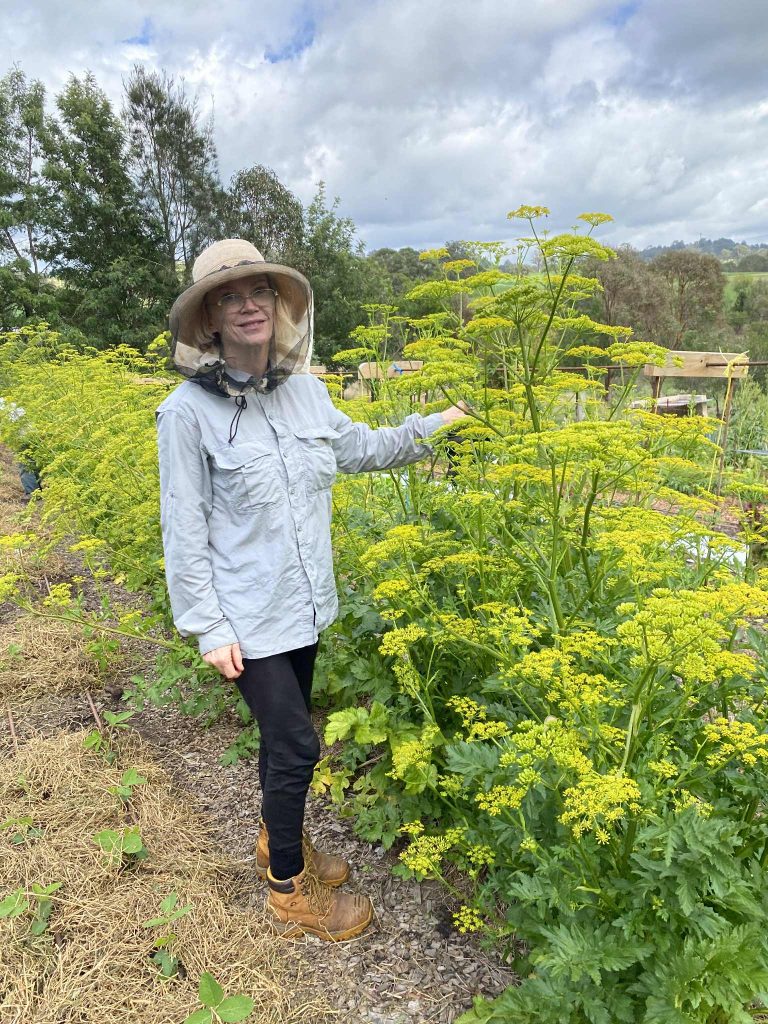
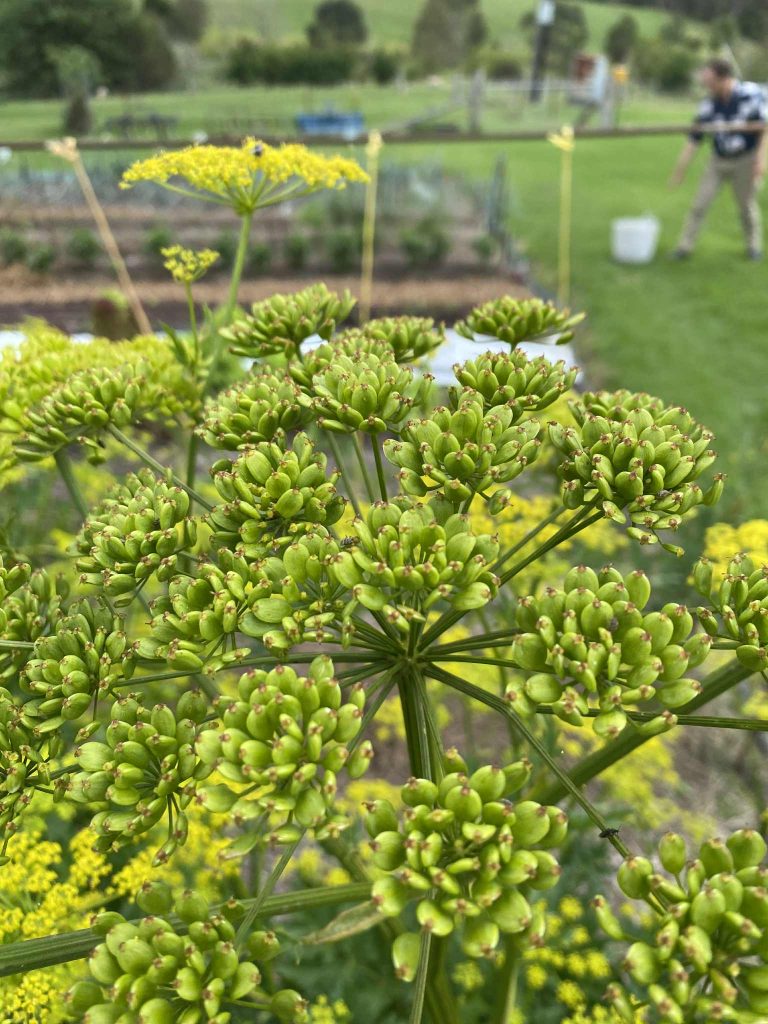
Growing for seed
Parsnips require vernalisation to trigger flowering. Temperatures below 10 C are required. The parsnips must be sexually mature before vernalisation begins so seed crops are generally sown by mid-summer or earlier in colder areas. Full sized roots are then left in the ground over winter as long as temperatures get cold enough. They are hardy to -12 C so there are few growing areas where they can’t simply be left in the ground. Mulch or other protections can be used for protection in the coldest locations.
Varieties of parsnip must not be allowed to flower at the same time as they are likely to be cross-pollinated by insects. A minimum isolation distance of 250 m between flowering varieties is suggested.
Flowering parsnip plants can get over 2 metres tall and may require staking in windy sites.
Larger populations of parsnip are needed to ensure inbreeding depression does not become an issue. Twenty plants should be considered the minimum if it is intended to keep a seed line going indefinitely. Seed can be harvested from as few as five plants. Regularly bringing in seed from other growers and mixing it with home-saved seed is another way to ensure genetic diversity of the seed stock is maintained.
Warning
The sap of flowering parsnips can cause blisters and skin burns. It occurs when the clear plant sap gets onto skin and is triggered by sunlight. The resulting burns are known as phytophotodermatitis. Long sleeves and gloves are recommended when harvesting seed or removing spent plants.
Selection
Like carrots and other biennial roots parsnip can be dug up in mid-winter to allow selection on root size and form. Roots with cracks, splits or excessive fine hairy roots should be discarded (eaten) and not used for seed production. All the leaves should be cut back retaining only stalks a couple of centimetres long. This will reduce transpiration issues with the transplanted roots.
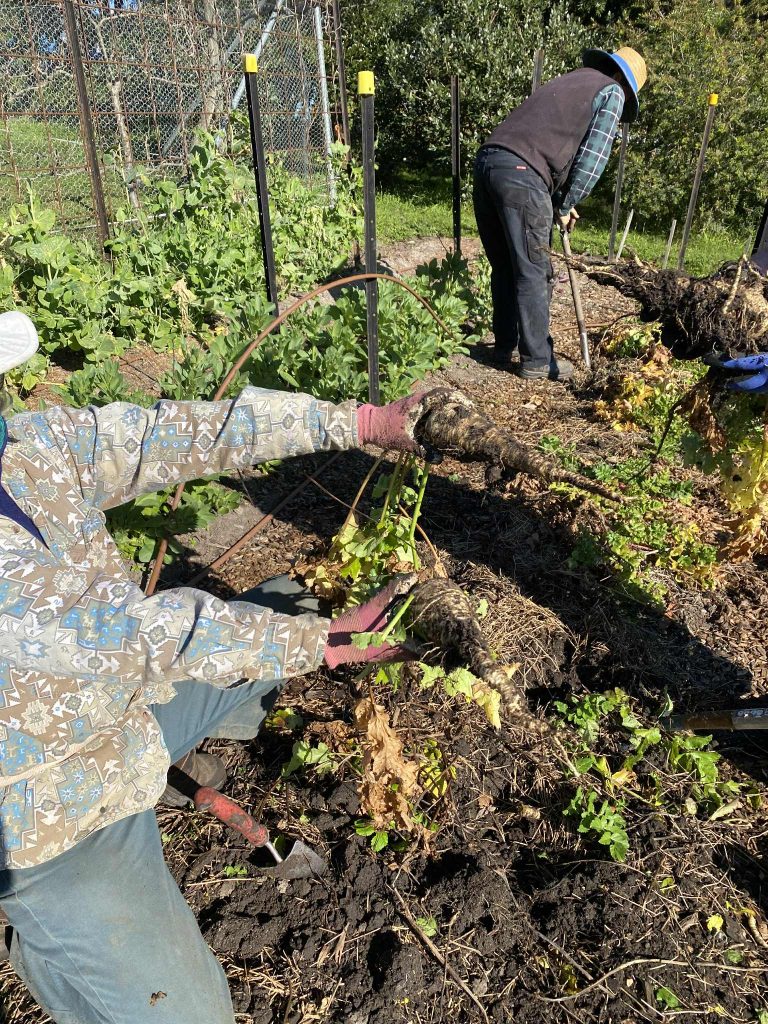
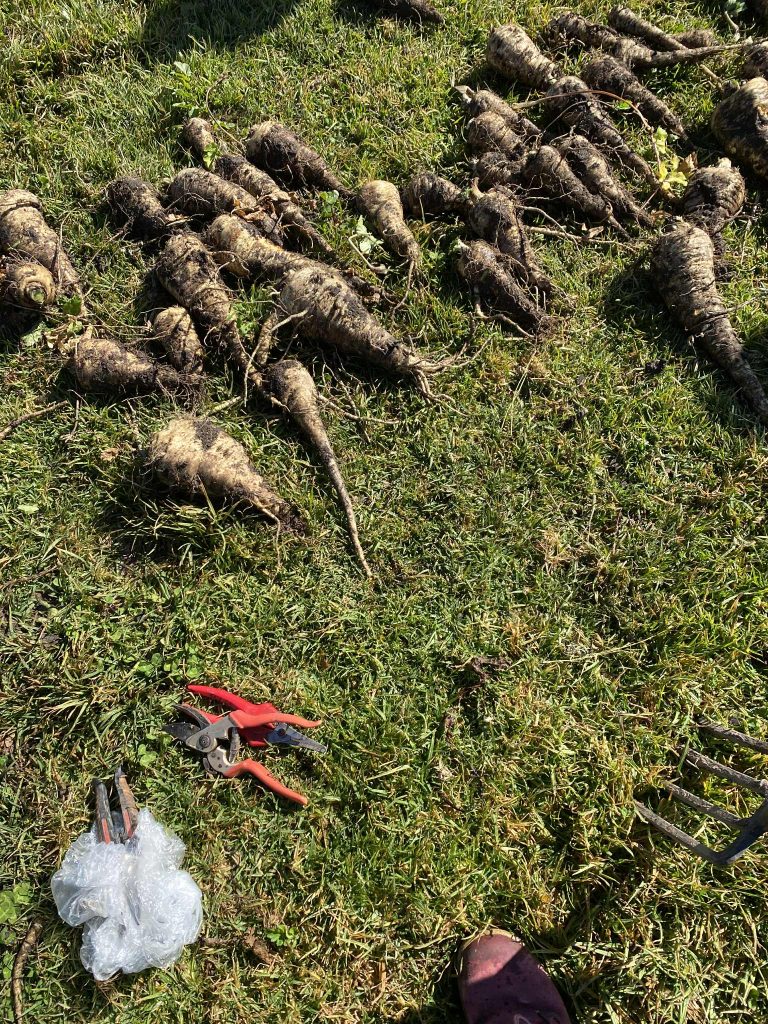
Harvest
Parsnip produces a central primary flower umbel and then produces secondary umbels around it. The biggest and best seed will be in the primary umbel and get progressively smaller with the later set umbels.
Seeds turn brown as they mature and need to be collected before they shatter into the garden.
As seeds are produced abundantly and a relatively large number of plants should be grown to flower together for genetic stability of the crop it is possible to harvest a significant amount of seed only from primary flowers. The crop can then be terminated and the area used for the next crop rather than waiting for all the seed to mature.
Processing
Parsnip seed can be dislodged from the flowerheads by either rubbing them between gloved hands or rubbing the head over the mesh of a sieve. Seed should be sieved and winnowed to remove unwanted frass.
Storage
After processing it is a good idea to keep the seed in a paper bag in a dry location for another few weeks to ensure that any moisture being held in the seed by the plant material has a chance to dry off.
There is a fair likelihood that insect pests will have laid their eggs in or on the seed. To stop them in their tracks one of the easiest methods of control is to freeze the seed for a few days. To do this the seed must be absolutely dry first. It then must be placed in a sealed airtight container – like a glass jar – and left in a freezer for 48 to 72 hours to kill pests and their eggs.
Seed is best stored in an airtight container where it is dark, cool and dry.
Contributors
Liz Worth, Nellie Pryke
